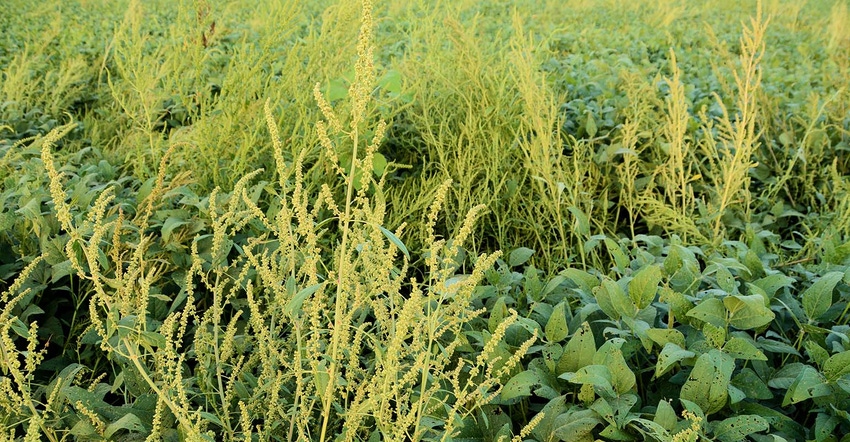January 17, 2018

Syngenta, along with a university research team, suggests key strategies for managing herbicide-resistant weeds:
Use multiple, effective modes of action (MOAs) every year — ideally, in every herbicide application.
A University of Illinois study found that consistent use of multiple, effective herbicide MOAs was effective in delaying resistance. Jeff Evans, with the USDA Agriculture Research Service in Urbana, Illinois, and his research team studied weed management data from 105 central Illinois grain farms from 2004 to 2010. The study evaluated why some fields developed populations of glyphosate-resistant water hemp and others didn’t.
A field that received an average of 2.5 MOAs per application from 2004 to 2006 was 83 times less likely to produce glyphosate-resistant waterhemp seeds than a field that received 1.5 different MOAs per application.
University of Illinois weed scientist Pat Tranel, who was part of Evans’s research team, said, “Ideally, it is more effective to have multiple MOAs in each application, but it depends on timing and effectiveness.”
Syngenta scientists have developed a computer model that produces similar findings. The model compares the longevity of various herbicide programs in corn and soybean cropping systems.
Dane Bowers, technical product lead for herbicides at Syngenta, stated that weed management programs utilizing three MOAs were able to delay development of resistance by at least 18 years over systems utilizing a single MOA (the model simulates 20 years).
The message is clear: Use of multiple, effective MOAs every year provides the best chance for growers to delay serious resistance problems.
Don’t count on herbicide rotation alone to prevent resistance.
While some believe herbicide rotation alone will keep them protected against resistance, the research doesn’t support that.
“Weed seeds don’t necessarily germinate the year after they’re produced. Seeds carrying resistance can lie dormant, then germinate after two years, when they’ll face the same herbicide that failed to control their parent weeds,” Bowers said. “If you’re using just one MOA in those years, then that resistant population is off to the races.”
Growers should account for early-emerging weeds, like giant ragweed, as well as late-emerging weeds, like waterhemp and Palmer amaranth. There are several herbicides available from Syngenta that support growers using multiple MOAs. Premix products provide farmers with better weed control and resistance-management options, helping protect existing chemistries.
Bowers recommends two-pass programs – a pre-emergence followed by a post-emergence – wherever possible.
“Generally, weeds are more susceptible prior to emergence,” said Bowers. “A pre-emergence herbicide will control a large percentage of potential weeds before they emerge. This reduces selection pressure on the post-emergence herbicide to delay resistance.”
Tranel said that the result of his team’s study is encouraging for growers and that it’s important for growers to remember they are in control of their own fields. Even if there are resistant weeds in a neighbor’s field, growers can prevent resistant weeds from becoming established in their own fields by using responsible management practices.
“Weed seeds will inevitably move around,” Tranel said, and most fields probably have at least a few resistant weeds in them. However, a significant resistance issue doesn’t happen overnight. The resistant population builds up, gradually at first, before eventually appearing to explode in a field. Using these key strategies can help delay that buildup.
Source: Syngenta
You May Also Like




